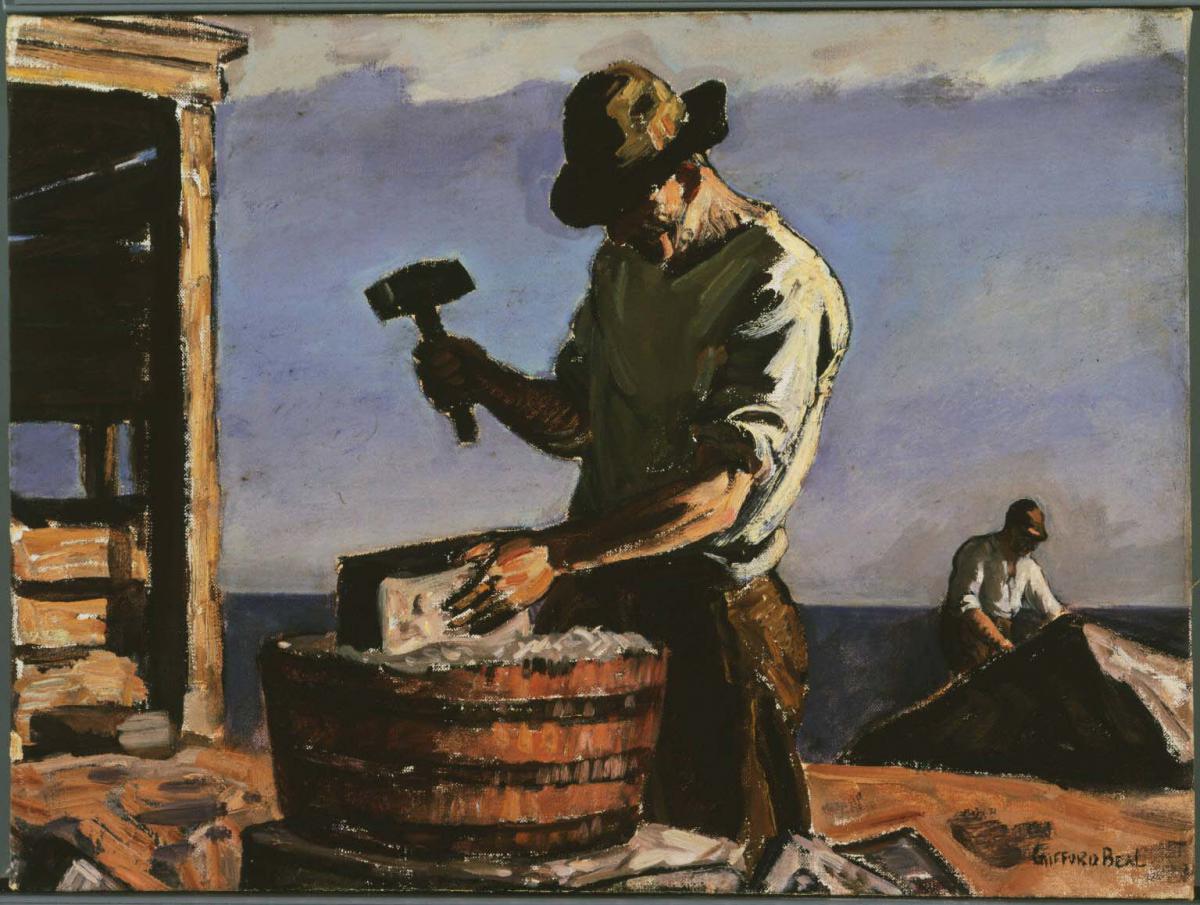The Quarryman
Gifford Beal ( 1931 )

Gifford Beal’s first summer on the New England seacoast in 1920 exposed him to the area’s rocky terrain and its hard-working inhabitants whose livelihood depended on the sea. The experience inspired him to concentrate on subjects exemplified in other works in the collection including Carrying the Nets, as well as this painting, The Quarryman. Monumentality is key in Beal’s work, whether in composition, brushwork or colors, and drew on the inspiration of his friends Rockwell Kent and George Bellows.
By the time he executed The Quarryman, nearly a decade after Carrying the Nets, Beal was no longer painting with the same sense of spectacle. In this painting, Beal replaced the staccato, textured brushstrokes and bright color of his earlier style for a more somber palette and studied composition. A solitary stonecutter, occupying the front of the picture plane, is shown hard at work at his everyday chores. The single monumental figure is silhouetted against a vast blue sky and lit dramatically from behind by intense sunlight. Deep shadows are cast in the folds of his garments and obscure his face; this deliberate concealment of individuality is perhaps Beal’s way of casting the stonecutter in the role of Everyman. Beal used the exposed ground of the canvas as a vital tone that serves to highlight the man’s sleeve. In the bold execution and heroic treatment of the subject, The Quarryman and its companion in the collection, The Fish Bucket, 1924, share an affinity with American Scene painting of the early 1930s.